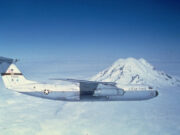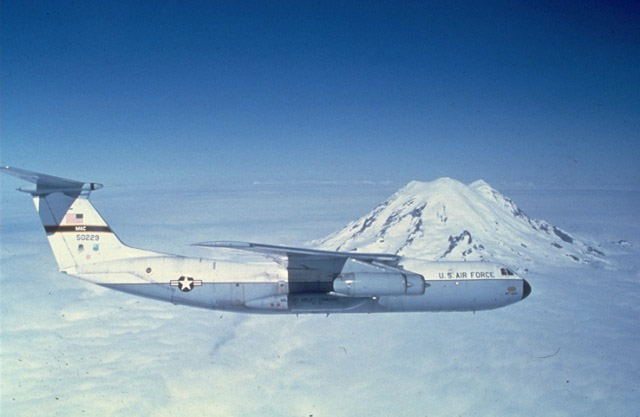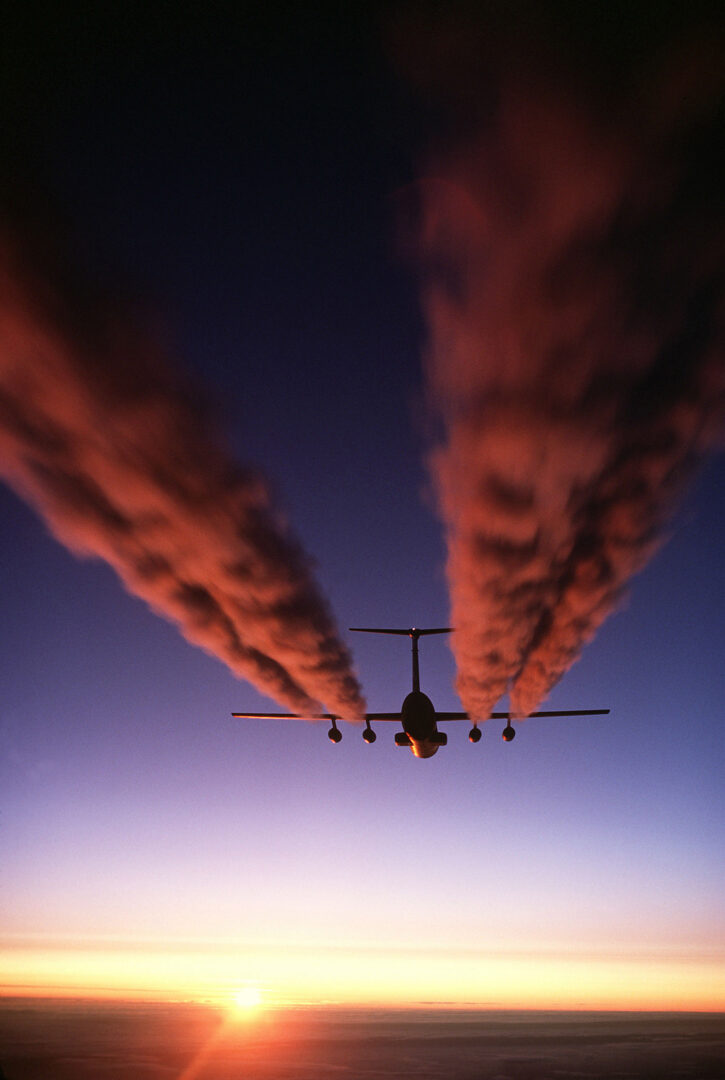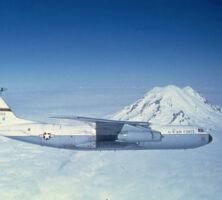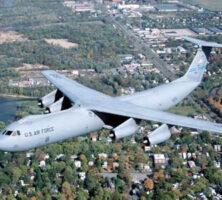The C-141 Starlifter, built by Lockheed-Georgia (later Lockheed Martin) of Marietta, was the first jet aircraft designed as both a troop transport and cargo carrier. For more than forty years of service with the U.S. military, the C-141 was deployed in a variety of capacities around the world and was maintained by the Warner Robins Air Logistics Center (WR-ALC) at Robins Air Force Base.
History of C-141A
U.S. Air Force (USAF) lieutenant general William Tunner, who commanded aircraft during World War II (1941-45) and the Berlin Airlift of 1948-49, first identified the need for what would become the C-141. In the 1950s he and other Military Air Transport Service leaders lobbied the U.S. Congress for a jet cargo-transport capable of “a flexible response to limited conflagration.” Congress appropriated funds for such an aircraft in 1960, and requests for proposals went out soon afterward. On March 13, 1961, U.S. president John F. Kennedy announced that the Lockheed Aircraft Corporation had been awarded the contract for the C-141. Lockheed had an advantage in the proposal process since it also produced the C-130 tactical transport for the USAF. The first production model rolled out of the company’s hangar on August 22, 1963, and six days later the USAF accepted the aircraft, now called the C-141A.

Photograph from U.S. Air Force
Lockheed designed the C-141 for easy maintenance, efficient loading, and relatively short landing and takeoff runs. Powered by four Pratt and Whitney TF33-P-7 turbo fan engines, the C-141A had an empty weight of 134,200 pounds and could carry 70,000 pounds of cargo or 154 troops at more than 500 miles per hour. The aircraft could also haul 63,000 pounds of cargo nearly 4,000 miles without refueling, and with a reduced speed and payload, it could exceed a range of 5,200 miles.
A versatile plane, the C-141, in all its versions, could handle more than thirty different types of missions. It had an adjustable storage compartment that transitioned from floor rollers for loading cargo to a smooth floor for wheeled vehicles. It could also be arranged with aft facing or sidewall canvas seats for passengers. In its aeromedical evacuation role, the Starlifter carried either 103 patients on stretchers, 113 mobile patients, or a combination of both.
The first C-141As were delivered to Tinker Air Force Base, Oklahoma, in October 1964 and began squadron operations in April 1965. They soon became the primary cargo-transport to Southeast Asia. Starlifters made almost daily flights to Vietnam, carrying troops, equipment, and supplies and transporting patients home to U.S. hospitals. During the late 1960s, about 250 of these aircraft carried most of the approximately 3 billion tons of military cargo flown to Vietnam.
In October 1973 the United States used C-141s to send supplies to Israeli troops during the Yom Kippur War. A crisis developed when America’s European allies, threatened with an oil embargo by Arab nations, refused to allow C-141s to land and refuel within their borders. Eventually Portugal relented and allowed the Starlifters to land in the Azores.
History of C-141B and C-141C
During the 1970s the Defense Department assigned Lockheed the task of modifying the C-141A fleet. Work on the new C-141B took place at the company’s massive factory in Marietta (at Dobbins Air Force Base), and the first “B” model rolled out of the plant on December 4, 1979. This version differed from the C-141A in several significant ways. The aircraft’s length increased by twenty-three feet, four inches, enlarging the cargo capacity from 7,019 cubic feet to 9,190 cubic feet. Lockheed also added a universal air-refueling receptacle allowing for the transfer of 23,592 gallons of fuel in approximately twenty-six minutes. This improvement resulted in longer nonstop flights and fewer refueling stops during global airlift missions.
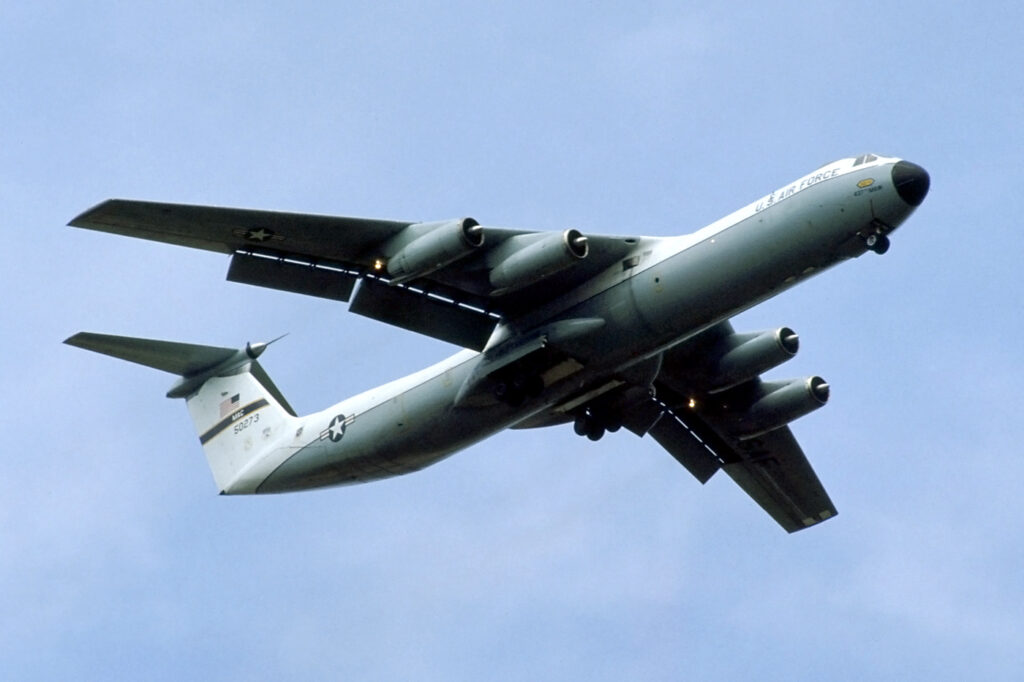
Image from Rob Schleiffert
In the fall of 1990, at the outset of Operations Desert Shield and Desert Storm, a C-141B from the 437th Military Airlift Wing, Charleston Air Force Base, South Carolina, was the first American aircraft to arrive in Saudi Arabia. In the following year, out of all military aircraft employed during the conflict, the C-141 completed the most airlift missions (7,047 out of 15,800), carrying more than 41,400 passengers and 139,600 tons of cargo to the region.
Modifications to sixty-three C-141s in the late 1990s resulted in the “C” model. Most of the changes updated the aircraft’s technological features. A team consisting of members from WR-ALC’s C-141 System Program Office and Raytheon E-Systems of Waco, Texas, completed the modifications by installing a digital autopilot, advanced avionics display, the All Weather Flight Control System (AWFCS), the Global Positioning System Enhanced Navigation System (GPSENS), the Traffic Collision Avoidance II System, and other improvements. These additions proved critical to crew and aircraft safety in hostile combat environments in Kosovo, Afghanistan, and Iraq.
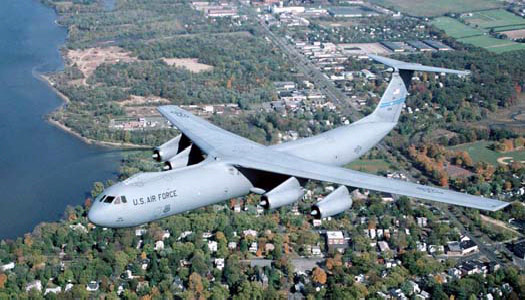
Courtesy of Robins Air Force Base
During forty-three years of service, C-141s performed a myriad of airlift missions, from deploying combat forces and their equipment over long distances to extracting the wounded or former prisoners of war from hostile areas. On May 6, 2006, after truly earning its reputation as the workhorse of the USAF fleet, the last C-141 in service was retired after landing at the National Museum of the United States Air Force near Wright-Patterson Air Force Base in Ohio.


